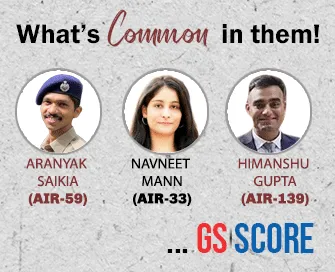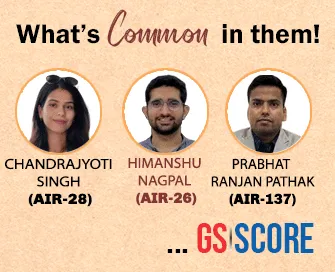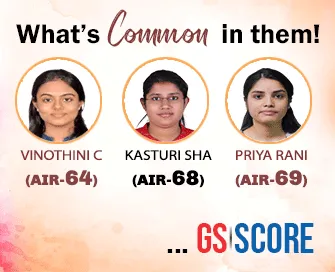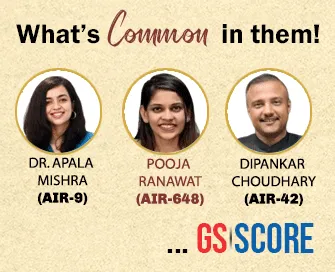

22nd July 2025 (15 Topics)
Mains Issues
Context
Recent studies and seismic data have highlighted the increasing frequency of human-induced earthquakes in India, with significant linkages to groundwater extraction, reservoir loading, and infrastructural activities in seismically vulnerable regions.
Rising Anthropogenic Activities and Seismic Vulnerability: A Case Study of Human-Induced Earthquakes in India
- Understanding Human-Induced Earthquakes
- Definition and Global Context: Human-induced earthquakes (HIEs) are seismic events triggered by anthropogenic activities. As per Seismological Research Letters (2017), over 700 such events have occurred globally in the last 150 years.
- Mechanism: Activities such as mining, fluid injection, dam construction, and groundwater depletion alter the stress balance along fault lines, potentially triggering seismic events.
- India-Specific Observations
- Delhi-NCR and Groundwater Depletion: A 2021 study in Scientific Reports linked shallow earthquakes in Delhi-NCR to groundwater extraction between 2003–2012. Seismic activity decreased post-2014 when the water table stabilized.
- Koyna Earthquake (1967): A 3 magnitude quake, caused by water impoundment in the Koyna dam, killed over 180 people and destroyed thousands of houses. This was one of the earliest confirmed instances of a reservoir-induced earthquake (RIE) in India.
- Other Vulnerable Zones:
- Mullaperiyar Dam (Kerala)
- Palghar district (Maharashtra)
- Sahyadri Range (Western Ghats) – showing signs of seismicity induced by extreme rainfall.
- Anthropogenic Triggers of Earthquakes
- Groundwater Extraction:
- Depletes sub-surface pressure balance.
- Increases vertical stress and may activate dormant fault lines.
- Reservoir-Induced Seismicity (RIS):
- Caused by loading and percolation of water in faulted rock zones.
- Risk aggravated in tectonically active areas like the Himalayas.
- Fracking and Energy Extraction:
- India has 56 fracking sites across six states.
- Injection of fluid causes fissures and displacement, triggering seismic events.
- Construction of Tall Infrastructure:
- Concentrated loading in high-rise cities in seismically active zones, e.g., Delhi, increases vulnerability.
- Impact of Climate Change on Seismicity
- Glacial Melting: Observed in Antarctica and Greenland; loss of mass alters stress distribution along tectonic plates.
- Rainfall Variability: Sudden, intense rainfall alters surface pressure and water loading—evident in the Sahyadris.
- Drought and Seismic Reactivation: 2014 California quake attributed to prolonged drought-induced fault reactivation.
- Scientific and Policy Recommendations:
- Scientific Monitoring:
- Expand seismic networks across fault-prone regions.
- Real-time monitoring systems to track fluid migration and stress changes.
- Regulatory Reforms:
- Enforce controlled dam-filling/emptying protocols, as done in the U.S.
- Limit fracking and energy projects in seismic zones.
- Groundwater Governance:
- Encourage rainwater harvesting and managed aquifer recharge.
- Integrate hydrogeology with urban planning and cropping patterns.
- Environmental Impact Assessment (EIA) Reforms:
- Mandatory seismic risk assessment for large infrastructure projects.
- Incorporate climate-induced seismic risk metrics in EIA reports.


Mains Issues
Context
The renewed threat of conflict between the United States, Israel, and Iran underlines the risks of instability in West Asia, posing direct strategic and economic challenges for India.
India’s Foreign Policy, Multipolarity, and Regional Security Interests
- Strategic Risks from a Possible Iran Regime Collapse
- Unipolar Consolidation in West Asia: A regime change in Iran could entrench U.S.-led unipolarity in the region, eliminating independent regional powers that counterbalance American influence. This would hinder India's aspiration to expand its strategic autonomy in West Asia.
- Weakening of India’s Balancing Diplomacy: India's diplomatic leverage with Israel and Gulf nations is premised on its ability to simultaneously engage with Iran and Syria. The fall of Iran would strip Delhi of this balancing capability.
- Energy Security Implications: India imports over 80% of its crude oil, with Iran historically being a reliable supplier. A post-Iran scenario dominated by U.S.-aligned oil regimes would undermine India’s energy diversification strategy.
- Clash of Global Visions: Multipolarity vs. Unipolarity
- India’s Commitment to Multipolarity: India's External Affairs Minister has openly advocated a multipolar world order. This is at odds with the West’s preference for a U.S.-centric global hierarchy and reveals deeper geopolitical contradictions between Delhi and Washington.
- Strategic Autonomy in Action: India’s refusal to isolate Russia following the Ukraine war, commissioning of Russian-made warships, and purchase of discounted Russian oil illustrate its steadfast pursuit of autonomy in global affairs.
- Perception Gap with the West: Western corporate and strategic establishments increasingly perceive India as drifting from their strategic orbit, especially as India finds itself ideologically and pragmatically closer to Russia and China on multipolarity.
- Policy Options and Diplomatic Pathways for India
- Advocating Restraint: India can use its strategic capital with the U.S. to urge non-intervention in Iran, highlighting the adverse impact such a war would have on Asian powers — particularly India and China.
- Strategic Leveraging of Quid Pro Quo: India’s neutral positioning, as seen during the Russia-Ukraine war, indicates that its cooperation cannot be assumed. India can use this to negotiate restraint in West Asia in return for quiet diplomatic support elsewhere.
- Recalibrating the West’s Global Vision: India should encourage the U.S. to accept a more distributed global power structure as a preferable alternative to endless conflict or the rise of exclusive Chinese regional dominance.
Way Forward:
- Assert Strategic Autonomy – Continue India’s policy of multi-alignment, resisting pressure to isolate countries like Iran and Russia.
- Strengthen Regional Engagements – Deepen ties with regional actors including Central Asia, Gulf states, and Southeast Asia to mitigate over-dependence on West Asia.
- Invest in Indigenous Energy and Security Capabilities – Develop domestic energy alternatives and strategic deterrents to withstand geopolitical shocks.
- Engage in Quiet Diplomacy – Use backchannel talks with the U.S. and EU to build a consensus around the necessity of multipolarity and regional stability.
|
PYQ:
|


Mains Issues
Context
Three significant U.S. court rulings in 2025 — Thomson Reuters vs Ross Intelligence, Bartz vs Anthropic, and Kadrey vs Meta — have offered legal clarity on the applicability of copyright laws to generative AI models and their training datasets.
- Understanding Generative AI and Copyright Concerns
- Nature of Generative AI
- Generative AI models are trained on vast datasets, including copyrighted and public domain content.
- They can generate text, images, and other media that may mimic or closely resemble original works.
- Copyright Implications
- Potential for reproduction of original works.
- Raises questions on ownership, fair use, and infringement.
- Concerns about economic losses for copyright holders if AI substitutes original content.
- Legal Principles Involved
- Fair Use Doctrine (U.S. Jurisdiction)
- S. courts have ruled that transformative use — where AI ‘learns’ from copyrighted texts — can fall under ‘fair use’.
- However, training on pirated content is not shielded under this provision.
- Text and Data Mining (EU/UK Context)
- Exceptions provided under specific circumstances, especially for non-commercial research or archival purposes.
- India’s Legal Framework
- Governed by Copyright Act, 1957, particularly Section 14 (economic rights) and Section 52 (fair dealing exceptions).
- India recognises copyrights for legal persons and supports international treaties (e.g., Berne Convention, TRIPS).
- Key U.S. Court Rulings: 2025
- Anthropic Case
- Judge William Alsup ruled that AI training using copyrighted works was transformative and comparable to human learning.
- However, training using pirated data must face trial — piracy remains outside protection.
- Meta Case
- Judge Vince Chhabria held that Meta’s training did not harm the market potential of original works.
- Encouraged equitable compensation mechanisms but upheld ‘fair use’ defence.
- Indian Context and Emerging Litigation
- ANI vs OpenAI
- Expected to clarify how India’s Copyright Act is interpreted in AI contexts.
- The central issue: whether generative AI's output violates exclusive economic rights of original copyright holders.
- Policy Ambiguities
- No AI-specific provisions exist under current Indian IPR law.
- Concerns about digital circumvention, piracy, and authorship standards remain unresolved.
Challenges in Legal Harmonisation
- Global Legal Divergence: No unified international consensus on AI and copyright laws.
- AI Authorship Debate: Traditional copyright requires human authorship, leading to legal uncertainty on machine-generated works.
- Pirated Content and Market Harm: Ongoing concerns about large-scale unauthorised data scraping.


Prelims Articles
Context
Vice-President Jagdeep Dhankhar resigned before completing his term, creating a rare mid-term vacancy in the second-highest constitutional office in India.
Constitutional Provisions:
- Article 63: There shall be a Vice-President of India.
- Article 66: Election of Vice-President.
- Article 67(b): The Vice-President may resign by writing under his hand addressed to the President.
- The Constitution does not provide for an acting Vice-President.
Function of Vice-President:
- Ex-officio Chairman of the Rajya Sabha (Article 64).
- In the event of resignation or vacancy, the Deputy Chairman of the Rajya Sabha performs the Chairman’s duties.
Election Procedure:
- Conducted under the Presidential and Vice-Presidential Elections Act, 1952.
- The electoral college comprises members of both Houses of Parliament, including nominated members.
- The election uses the proportional representation system by means of a single transferable vote, through a secret ballot.
- State legislatures do not participate in this election.
- The quota is calculated as:
- Quota = (Total Valid Votes ÷ 2) + 1
Term of Office:x
- Unlike a by-election for a Lok Sabha/Rajya Sabha seat, the newly elected Vice-President serves a full five-year term, not the remainder of the predecessor’s term.
Timeline for Election:
- No constitutional deadline, but as per practice, the Election Commission is expected to conduct the poll “as soon as possible.”
- The Secretary-General of Lok Sabha or Rajya Sabha acts as the Returning Officer, on a rotational basis.
Eligibility Criteria:
- Must be a citizen of India.
- Must have completed 35 years of age.
- Must be qualified to be elected to the Rajya Sabha.
- Must not hold any office of profit under the Union or State governments (exceptions: President, Vice-President, Governor, or Minister).
|
PYQ: Who among the following can preside over the proceedings of the Lok Sabha in the absence of the Speaker and the Deputy Speaker of the Lok Sabha? (2017) (a) A member appointed by the President (b) A member nominated by the members of the Parliament present in the House (c) A member of the Panel of Chairpersons of the Lok Sabha (d) A senior most member of the House |


Prelims Articles
Context
The Supreme Court is currently hearing challenges to the Special Intensive Revision (SIR) of electoral rolls in Bihar, prompting a renewed legal and constitutional debate on the status of the ‘right to vote’ in India.
Nature and Classification of Rights:
- Natural Rights: Inherent and inalienable; e.g., right to life and liberty. Indian courts may interpret them through fundamental rights but do not directly enforce them.
- Fundamental Rights (Part III): Enforceable via Article 32 in the Supreme Court; violation by the State is not permitted.
- Constitutional Rights (Outside Part III): Provided under the Constitution (e.g., right to property, free trade); enforceable via Article 226 or respective laws.
- Statutory Rights: Conferred and modified through legislative enactments; enforceable as per procedures laid down in the respective statutes.
Constitutional Provision on Voting:
- Article 326: Provides for universal adult franchise, stipulating that any citizen aged 18 or above, not otherwise disqualified by law, shall be entitled to vote.
- Representation of the People Act, 1950:
- Section 16: Disqualifies non-citizens from being enrolled.
- Section 19: Mandates minimum age and “ordinary residence” in a constituency.
- Representation of the People Act, 1951:
- Section 62: Confers the right to vote to those listed in the electoral roll, with exceptions such as disqualifications or imprisonment.
Judicial Interpretation of Right to Vote:
- P. Ponnuswami Case (1952): Held right to vote is a statutory right.
- Jyoti Basu Case (1982): Reaffirmed voting as a statutory right, not a fundamental or common law right.
- PUCL Case (2003): Observed it could be a constitutional right, if not fundamental.
- Kuldip Nayar Case (2006): Upheld voting as statutory.
- Raj Bala Case (2015): Division Bench termed it a constitutional right.
- Anoop Baranwal Case (2023): Majority reiterated it as a statutory right, though Justice Ajay Rastogi’s dissent associated it with Article 19(1)(a) and the basic structure doctrine.
|
PYQ: Right to vote and to be elected in India is a: (2017) (a) Fundamental Right (b) Natural Right (c) Constitutional Right (d) Legal Right |


Prelims Articles
Context
The Union Government has initiated consultations with key ministries and state governments regarding the formation of the Eighth Central Pay Commission (CPC) to revise pay and pension structures for central government employees and pensioners.
Central Pay Commission (CPC):
- Definition: A Central Pay Commission is constituted periodically to review and recommend changes in the salary structure, allowances, and pension benefits for central government employees and pensioners.
- Constitutional Backing: Not mandated by the Constitution but derives authority from executive resolution under Article 73 (executive power of the Union).
- Frequency: Typically established every 10 years.
- Administrative Setup: Comes under the Department of Expenditure, Ministry of Finance.
- Composition: Usually chaired by a retired Supreme Court judge, supported by bureaucrats and financial experts.
Eighth Central Pay Commission
- Background: The Central Pay Commission is constituted every decade to review and recommend changes in the salary structure, allowances, and pension schemes for central government employees and pensioners. The Seventh CPC was implemented in 2016 with effect from 1st January 2016.
- Eighth CPC Formation: In January, the Union Cabinet approved the formation of the 8th CPC. As of July 2025, inputs are being sought from ministries such as Defence, Home Affairs, DoPT, and State Governments.
- Coverage: The 8th CPC will impact approximately 50 lakh serving employees and 65 lakh pensioners.
- Process: The commission’s recommendations are advisory in nature. Once submitted, they must be accepted by the Union Government before implementation. The time frame for submission and implementation has not yet been finalised.


Prelims Articles
Context
According to data provided in the Lok Sabha, only around 6% of the internship offer recipients under the Prime Minister Internship Scheme (PMIS) have joined work, highlighting poor conversion rates in the flagship youth programme.
PM Internship Scheme
About the Scheme:
- The Prime Minister Internship Scheme (PMIS) was launched under Union Budget 2024–25, targeting 1 crore internships over five years in the top 500 private companies in India. The scheme aims to enhance employability among youth by providing real-time industry exposure.
Implementation Details:
- It operates through the PMIS Portal, designed to act as a one-stop interface for application, selection, and tracking of internships.
- The scheme is being implemented in a phased pilot mode.
- First round:27 lakh internship opportunities posted; 6.21 lakh applications received; 82,000 offers made; ~8,700 joined.
- Second round (as of July 17, 2025):18 lakh opportunities posted; 4.55 lakh applications received; 71,000 offers made; 22,500 accepted so far.
Current Concerns:
- The acceptance rate is 33%, and the actual joining rate is just ~6%, which raises questions regarding:
- Lack of awareness or follow-through among applicants.
- Possible mismatch in candidate skillsets or expectations.
- Logistical challenges in coordination between companies and interns.
Institutional Stakeholders:
- Ministry of Finance (nodal authority for reporting and monitoring).
- Top 500 Indian companies (as per government classification).
- Youth aged 18–25 years are the primary beneficiaries.
Significance for Prelims:
- It falls under government schemes for youth skill development and employment.
- Related to Digital India, Skill India Mission, and employment generation efforts.


Prelims Articles
Context
Life Insurance Corporation of India (LIC) has signed a Memorandum of Understanding (MoU) with the Department of Rural Development to promote the Bima Sakhi Yojana, aimed at empowering women in rural areas through a career in insurance agency services.
Bima Sakhi Yojana
- The Bima Sakhi Yojana is a performance-oriented stipendiary agency model promoted by LIC.
- It is specifically designed for rural women, offering them a structured career as LIC agents.
- All standard benefits and privileges applicable to LIC agents, including commissions and bonuses, are extended under this scheme.
- The scheme aims to enhance women's financial inclusion and strengthen rural insurance penetration.
Institutional Collaboration:
- The MoU has been signed between LIC and the Department of Rural Development, under the Union Ministry of Rural Development.
- This collaboration is in line with the Deendayal Antyodaya Yojana – National Rural Livelihoods Mission (DAY-NRLM), which focuses on self-employment, women empowerment, and community-led development.


Prelims Articles
Context
Despite headline inflation remaining below RBI's medium-term target of 4%, core inflation has increased from 3.6% to 4.5% between January and June 2025, raising concerns over future monetary policy decisions.
Core Inflation:
- Core inflation refers to the rate of inflation after excluding volatile components such as food and fuel prices. It provides a clearer picture of the underlying inflation trend in the economy.
Current Trends:
- As per the latest data, headline inflation has softened (2.1% in June 2025), but core inflation has increased to 4.5%.
- Such divergence between headline and core inflation is significant because headline inflation tends to converge with core inflation over time.
RBI’s Role & Policy Implications:
- Although the Reserve Bank of India (RBI) targets headline CPI inflation (with a band of 2% to 6%), core inflation acts as a leading indicator of inflationary pressures.
- Persistent core inflation may delay further monetary easing (repo rate cuts), despite low headline figures.
International Comparison:
- Different countries exclude varying items in core inflation calculation. For instance, the US excludes food and energy, while Japan excludes fresh food items. India excludes food and fuel.
Analytical Framework:
- RBI uses multiple core inflation measures, including those excluding gold, silver, petrol, and diesel.
- Increasing the frequency and scope of such disaggregated analysis may help refine monetary policy responses.


Prelims Articles
Context
As per recent financial data, Non-Banking Financial Companies (NBFCs) increased their share in personal loan originations to 36.4% in FY25, overtaking both public and private sector banks.
Personal Loan Originations
- Refer to the process of onboarding customers for unsecured personal loans through due diligence, credit assessment, and KYC verification.
NBFCs' Rise:
- The NBFCs have captured a significant share (36.4%) in personal loan originations in FY25, up from 32.2% in FY24, driven by micro-lending in Tier-2 and Tier-3 cities and targeting small-ticket consumption loans.
Banks' Declining Share:
- Public Sector Banks (PSBs) and Private Sector Banks saw a decline in their share to 31% and 29.2%, respectively.
Structural Economic Shift:
- This trend reflects a shift toward a consumption-driven economy, where credit-led demand is replacing traditional savings-led demand in rural and semi-urban India.
Unsecured Lending Surge:
- NBFCs' credit books expanded at a CAGR of ~20% from FY22 to FY25, mainly driven by a 3x surge in unsecured lending, especially personal loans.
Regulatory Action by RBI:
- In November 2023, the RBI raised risk weights on personal consumption loans, credit cards, and NBFC lending to address financial stability risks due to rising unsecured loans.
- In February 2024, RBI rolled back higher risk weights on bank loans to NBFCs, but the tightened norms for unsecured loans remained in force.


Prelims Articles
Context
Startups like Rupeeflo, in collaboration with stockbrokers such as Zerodha and Angel One, are attempting to digitize and simplify the cumbersome account opening process for Non-Resident Indians (NRIs) investing in Indian markets.
Demat Account for NRIs:
- NRIs must open a Portfolio Investment Scheme (PIS)-linked demat account with a registered broker to invest in Indian securities. This process involves multiple compliance steps under RBI and SEBI
Current Procedure:
- Physical submission of 20–30-page account opening forms.
- Mandatory notarization of Know Your Customer (KYC) documents.
- Notarization must be done through entities such as licensed notaries, scheduled commercial banks, Indian embassies, or court authorities
Key Challenges:
- In-person document submission and manual notarization requirements delay and discourage overseas investors.
- SEBI regulations do not permit webcam-based IPV (In-Person Verification) or e-signing if the NRI is not present in India.
GIFT City Exception:
- Under the International Financial Services Centres Authority (IFSCA) at GIFT City, NRI onboarding is allowed through face-to-face KYC processes conducted by fintechs operating under a separate regulatory framework.
|
DEMAT ACCOUNT Definition & Purpose
Key Functions
Assets Held
Regulatory Oversight
Key Concepts
Transactions & Charges
|


Prelims Articles
Context
Over 200 children in China’s Hunan Province suffered lead poisoning, allegedly due to food coloring used in school snacks. A rare government acknowledgment revealed that local health officials concealed the case.
Lead Poisoning
Nature of Lead Poisoning
- Lead poisoning occurs due to the ingestion or inhalation of lead-containing materials such as paint chips, contaminated dust, water, or consumer products. It is a cumulative toxicant that affects multiple body systems and is particularly harmful to children under the age of 6.
Vulnerability of Children
- Children absorb more lead than adults, and their developing nervous systems are particularly sensitive to its effects.
- Symptoms in children include developmental delays, behavioral disorders, learning difficulties, reduced IQ, and physical growth retardation.
- In the United States, an estimated 500,000 children aged 1–5 years exhibit unsafe blood lead levels.
Sources of Exposure
- Major sources include:
- Lead-based paint in homes built before 1978.
- Soil contaminated by vehicle exhaust and leaded paint scrapings.
- Toys, furniture, and utensils with lead-based paints or glazes.
- Imported products (e.g., pottery, cosmetics).
- Drinking water from lead-soldered pipes and older plumbing.
- Certain occupations and hobbies (e.g., battery recycling, stained glass work).
Health Effects
- Lead affects nearly every organ system. Acute poisoning may cause abdominal cramps, vomiting, encephalopathy, and even death. Chronic exposure can lead to anemia, renal impairment, hearing loss, infertility, and neurocognitive damage.
Global Burden
WHO estimates that nearly 1 million deaths annually are attributable to lead exposure, making it one of the top environmental health risks globally. Lead exposure is also associated with economic losses, particularly in low- and middle-income countries due to cognitive damage in children.

Editorials
Context
The growing curtailment of academic and intellectual freedom worldwide—particularly in democratic nations—has sparked critical discourse on the erosion of democratic values and the suppression of dissent in universities and public institutions.
The Foundations of Freedom
- Freedom and Pluralism: Democracy is rooted in pluralism and dissent; freedom limited to majoritarian or partisan voices negates its foundational ideals.
- Universities as Democratic Pillars: Educational institutions are vital spaces for civilisational inquiry, dissent, and critical engagement; their politicisation corrodes intellectual rigor.
- The Symbolism of Suppression: The silencing of critical voices—through censorship or ideological policing—signals the degeneration of intellectual autonomy and societal maturity.
Consequences of Suppressing Dissent
- Conformity over Creativity: Suppression of divergent views fosters a climate of fear, stifling innovation, imagination, and academic advancement.
- Erosion of Public Reason: When academic or journalistic inquiry is labeled “anti-national,” it weakens the foundation of public discourse and rational debate.
- Global Repercussions: Nations lose moral legitimacy and international standing when they project democratic values abroad but stifle freedoms at home.
Reclaiming Democratic Integrity
- Patriotism and Critical Engagement: True patriotism involves questioning and critiquing injustices to strengthen national institutions, not conforming blindly to dominant narratives.
- Hope in Dissent: Historical movements—from Václav Havel’s resistance to student-led protests—affirm the enduring spirit of dissent and intellectual resilience.
- Listening as a Democratic Imperative: The real strength of a democracy lies in its ability to accommodate dissenting voices, which are essential for introspection and systemic reform.
Practice Question:
"Academic and intellectual freedom is an essential precondition for a functioning democracy." Critically examine this statement in the light of recent developments in educational institutions and freedom of speech. (250 words)


Editorials
Context
The acquittal of all accused in the 2006 Mumbai train bombings, nearly 19 years after the incident, highlights serious flaws in the Indian criminal justice and investigation systems, raising deep concerns about justice delivery and institutional accountability.
Institutional Gaps in Terror Prosecution
- Failure of Criminal Justice Institutions: The acquittal of accused despite a gruesome terror attack that killed over 180 and injured 800 underscores systemic lapses in prosecution and judicial delivery.
- Investigation Deficiencies: Despite initial arrests and confessions, poor coordination, reliance on weak evidence, and ineffective probe mechanisms led to failure in securing convictions.
- Prosecution and Judicial Disconnect: Courts have shown growing distrust of confessions and witness testimonies not backed by forensic evidence, exposing prosecutorial inefficiency.
Challenges in Anti-Terror Operations
- Pressure on Law Enforcement: Political interference and societal demand for quick justice lead to hurried arrests, incomplete investigations, and reliance on coerced confessions.
- Dependence on Stock Witnesses: Overuse of unreliable and poorly protected witnesses — often stock witnesses — erodes the credibility of evidence in terrorism-related cases.
- Lack of Forensic and Technical Capacity: Field units are under-equipped and undertrained in advanced forensic and digital tools, leading to poor documentation and case collapse in court.
The Need for Reform and Accountability
- Training and Technology Integration: Specialized anti-terror squads must be well-resourced, professionally trained, and equipped with the latest forensic and surveillance technology.
- Rebuilding Public Trust: Frequent acquittals in high-profile terror cases not only deny justice to victims but also damage public confidence in state institutions.
- Call for Systemic Overhaul: There is a pressing need for a national investigation and prosecution framework with stronger legal, technological, and procedural capabilities to handle complex terror cases.
Practice Question:
“The acquittal of accused in terror-related cases highlights deep structural flaws in India’s investigative and criminal justice system.” Critically examine this statement in the context of the 2006 Mumbai train blast verdict. Suggest robust institutional reforms. (250 words)


Editorials
Context
As India and the United Kingdom near the finalisation of a Free Trade Agreement (FTA), significant emphasis is being placed on the role of Global Capability Centres (GCCs) as a key driver of bilateral digital and services sector cooperation.
Strategic Importance of GCCs in the FTA Framework
- India as a Global GCC Leader: With over 1,500 GCCs employing 1.9 million professionals, India has emerged as a global hub for digital transformation, R&D, cybersecurity, and analytics.
- British Stake in India’s Digital Growth:K. companies increasingly view India not merely as a cost-effective destination but as a strategic partner in technology-driven service delivery.
- FTA as a Growth Enabler: The proposed FTA can facilitate talent mobility, harmonise digital governance standards, and lower regulatory hurdles, thereby deepening U.K.-India collaboration in GCC development.
Policy Push and Subnational Initiatives
- Evolving National Framework: The Indian government, through MeitY, has initiated the formulation of a national GCC policy, involving stakeholders such as NASSCOM, Zinnov, and Invest India, as outlined in Budget 2025.
- State-Level Momentum: States like Uttar Pradesh are independently advancing GCC agendas through initiatives such as the "GCC Conclave", targeting tier-2 cities like Lucknow and Varanasi for infrastructure development.
- Decentralized Policy Debate: Expert consultations have raised questions about the merits of a centralized national policy versus organic state-driven models, especially regarding governance harmonization and competitive federalism.
Geopolitical Implications and Future Pathways
- FTA as a Soft Power Tool: For post-Brexit U.K., access to India's digital economy strengthens its services sector globally, while for India, British capital and expertise align with its ambitions to move up the global value chain.
- Legal and Operational Barriers: Issues such as double taxation, data localisation, and mobility restrictions were identified as key bottlenecks; their resolution is critical for unlocking GCC scalability.
- Towards a Knowledge Corridor: The U.K.-India FTA could give rise to a robust "knowledge corridor", wherein GCCs serve as engines of innovation, economic diplomacy, and professional exchange between the two democracies.
Practice Question:
“The India–U.K. Free Trade Agreement represents a strategic convergence of digital, services, and talent-driven economies.” In light of this statement, critically evaluate the potential of Global Capability Centers (GCCs) as instruments of bilateral cooperation. (250 words)




